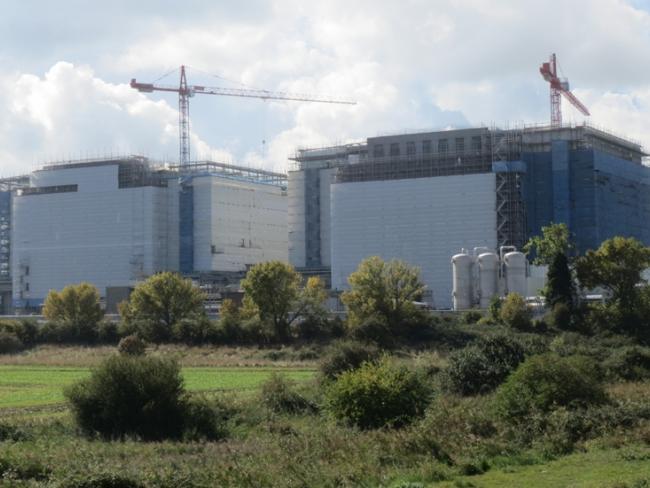26 May 2015

Bradwell, Essex nuclear power station being decommissioned. Photo Workers.
Why we need nuclear power: the environmental case, by Michael H Fox, hardback, 306 pages, ISBN 978-0-19-934457-4, Oxford University Press, 2014, £22.99.
Michael H Fox is Emeritus Professor in the Department of Environmental and Radiological Health Sciences at Colorado State University. In this well-researched book he makes the case for expanding nuclear power.
Fox points out that there has been an unprecedented rise in greenhouse gases in the last 100 years. Since 1980 atmospheric carbon dioxide levels and global temperatures have increased. 2001 to 2010 was the hottest decade for 100,000 years. The seas are rising and the glaciers are melting.
We need to reduce our use of energy sources that produce carbon dioxide, principally coal. But the demand for electricity is growing. Some people say wind and solar energy can wholly or partially replace coal as a primary source for electricity generation. They overlook that wind and solar energy cannot produce the vast quantities of power needed. Both sources are limited by intermittent supply, remote locations, huge footprints and high costs.
Alternatives
We need to look at the case for nuclear power as an alternative to coal. Nuclear power produces 2 per cent of the carbon dioxide emissions of coal. That’s a similar level to wind and better than solar power.
Nuclear plants reliably deliver power 90 per cent of the time. The other 10 per cent is for fuel change. The alternatives depend on the weather. Their effective capacity is much lower, solar at 25 per cent, wind at 33 per cent.
Nuclear power is cheaper than solar power and nearly as cheap as wind power. The average lifetime cost of nuclear power is $111 per megawatt hour. That compares well with $153 for photovoltaic solar power, $242 for concentrated solar power and $96 for new wind power.
Professor Fox deals with the common arguments against nuclear power. He points out that it has the best safety record of any major power industry in the USA. Even including the 1979 Three Mile Island accident, not a single life has been lost in 50 years of nuclear reactor operation in the USA. That’s 3,600 reactor-years of experience.
"nuclear power has the best safety record of any major power industry"
After the 2011 earthquake near the nuclear plant at Fukushima, Japan, the Health Physics Society reported that about 20,000 people died from the effects of the earthquake and the resulting tsunami. Not one died from radiation effects.
The new nuclear power plants being built are far safer than the earlier ones. In the USA, public utilities own many nuclear power plants. Public interest prevents any profit-driven, cost-cutting safety cuts.
Worries about disposing of spent nuclear fuel can be assuaged by using it better. Britain, France, Japan and Russia all reprocess their spent nuclear fuel.
After the Fukushima earthquake, Angela Merkel decided to end Germany’s nuclear power by 2022 despite the facts. Germany sits on no known fault lines, could not be hit by a tsunami and has never had a serious nuclear accident. Wind and solar power will not be able to make up for that loss of nuclear power.
Merkel’s decision means that Germany will buy more nuclear power from France and it will be more dependent on Russia for natural gas. Germany will also burn more of its lignite; known as “brown coal” it creates more carbon dioxide than any other type.
Nuclear power provides a high-capacity, carbon dioxide-free source of electricity for much of the industrialised world. Nuclear power has to grow to reduce our dependence on coal for electricity. Wishing that wind and solar can take the place of coal doesn’t make it true.
